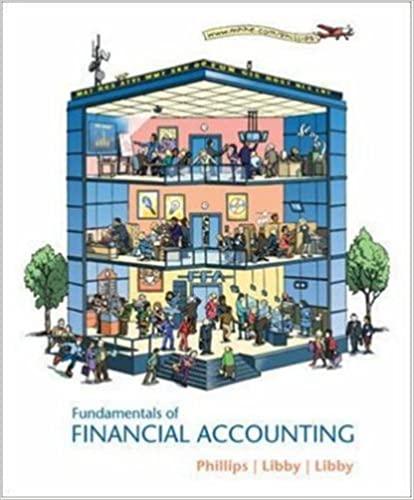Question
Chapter 16: Case Study #1 Hotel worker Danny Ruiz was living with his wife and four children in a cramped New York apartment when he
Chapter 16: Case Study #1
Hotel worker Danny Ruiz was living with his wife and four children in a cramped New York apartment when he saw a television ad promising the family a way out. Why rent when you can own your own home? Penn- sylvania builder Gene Percudani asked. The company even offered to pay his rent for a year, while he saved for a down payment. So the Ruiz family fled the city for the Pocono Mountains, where they bought a three- bedroom Cape Cod home for $171,000. However, when they tried to refinance less than two years later, the home was valued at just $125,000. I just about flipped, said Mr. Ruiz. Later Mrs. Ruiz remarked about her husband, He went nuts. Percudani, a 51-year-old native of Queens, New York, built a thriving homebuilding business in this market, running folksy television ads offering New Yorkers new homes in Pennsylvania. If they joined Percudanis program, called Why Rent, homeowners would find financing through another of his companies, Chapel Creek Mort- gage, which brokered loans from J. P. Morgan Chase and the companys Chase Manhattan Mortgage unit. For years, the Why Rent program appealed to workers with modest salaries, such as Eberht Rios, a truck driver for UPS. Rios bought a home in the Poco- nos for $140,000. This year, when he tried to refinance, he was told the home was valued at only $100,000. One local appraiser, Dominick Stranieri, signed off on most of the Why Rent deals that state officials now say were overpriced, including the Rios and Ruiz homes. Percudanis firm picked Stranieri as his appraiser because of his quick work and low fee of $250, instead of the typical $300 to $400. In exchange for a steady stream of work, Mr. Stranieri accepted without ques- tion valuations from Percudanis company. Other common methods of creating revenues include investors and others buying distressed proper- ties and then, using inflated appraisals, selling them for a big profit. In order to secure the efforts of a dirty appraiser, those involved with the fraud would pay up to $1,500 under the table on top of the appraisers stan- dard fee of $400. Another unique twist to the plot is that few of the people involved in making mortgage loans have a long- term interest in them. Traditionally, bankers made loans directly and held them, giving the lenders a strong incentive to find fair appraisals to protect their interest. Today, however, many appraisers are picked by independent mortgage brokers, who are paid per transaction and have little stake in the long-term health of the loans. Many lenders have also lost a long-term interest in their loans, because they sell them off to investors. Appraisers increasingly fear that if they dont go along with higher valuations sought by bro- kers, their business will dry up. Do you think a county appraiser would do a lot bet- ter than a private practitioner? Joel Marcus, a New Yorkbased attorney recently had his property valued at $2.2 million by a county appraiser, up from $2 million the previous year, which means a $7,200 jump in his property tax bill. Based on recent home sales in his neighborhood, Marcus believes his property is valued at between $1.7 and $1.8 million. Based on this information, Marcus has appealed his appraisal. Although a good appraisal requires doing hours of legwork, visiting a property to check its condition, and coming up with at least three comparable sales, Percudani says he isnt surprised that later appraisals, or even different appraisals made at the same time, could result in different values. Appraisals are opinions, he says. Value, like beauty, is in the eye of the beholder. Stranieri and Percudani deny any wrongdoing and say they operated independently and that any home that declined in value did so because of a weak economy. Its like buying a stock, Percudani says in an inter- view. The value goes up. The value goes down.
Questions
1. How is an opportunity created to commit appraisal fraud? Does the appraiser act alone, or is collusion routinely involved?
2. How is appraisal fraud detected? Is intent to deceive easy to prove in appraisal fraud?
3. What pressures or perceived pressures can motivate appraisers to make faulty valuations?
4. How do appraisers rationalize their fraudulent behavior?
5. Why would a county perceive pressure to fraudulently inflate property values?
6. What controls would help to prevent appraisal fraud?
7. What natural controls exist to prevent homeowners from the desire to massage the value of their homes? (Hint: Think about a homeowners motivation.)
Step by Step Solution
There are 3 Steps involved in it
Step: 1

Get Instant Access to Expert-Tailored Solutions
See step-by-step solutions with expert insights and AI powered tools for academic success
Step: 2

Step: 3

Ace Your Homework with AI
Get the answers you need in no time with our AI-driven, step-by-step assistance
Get Started


